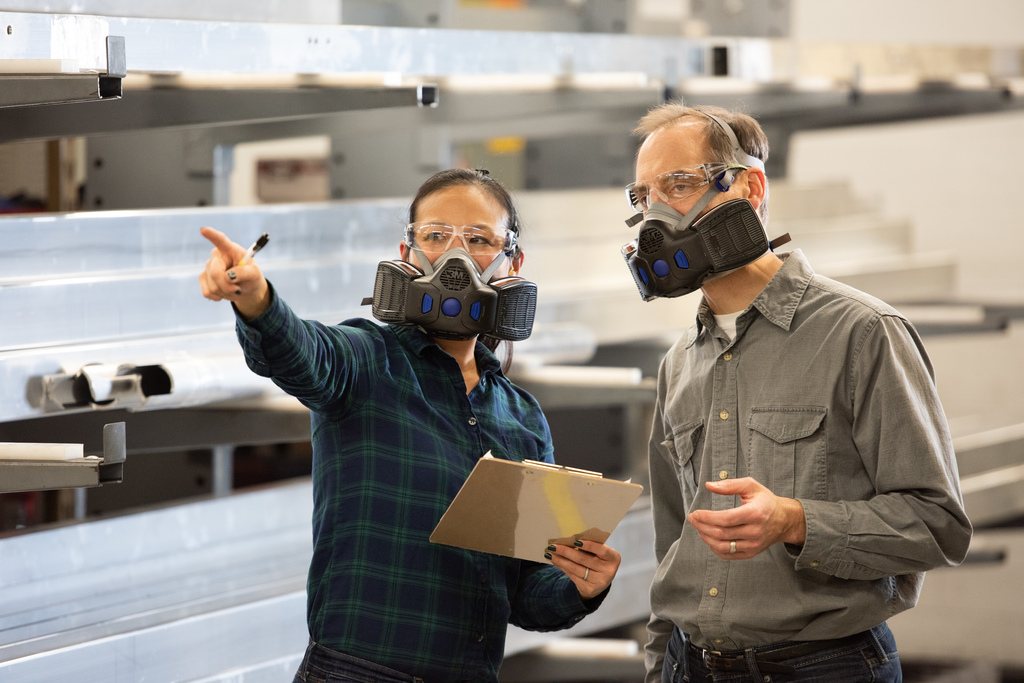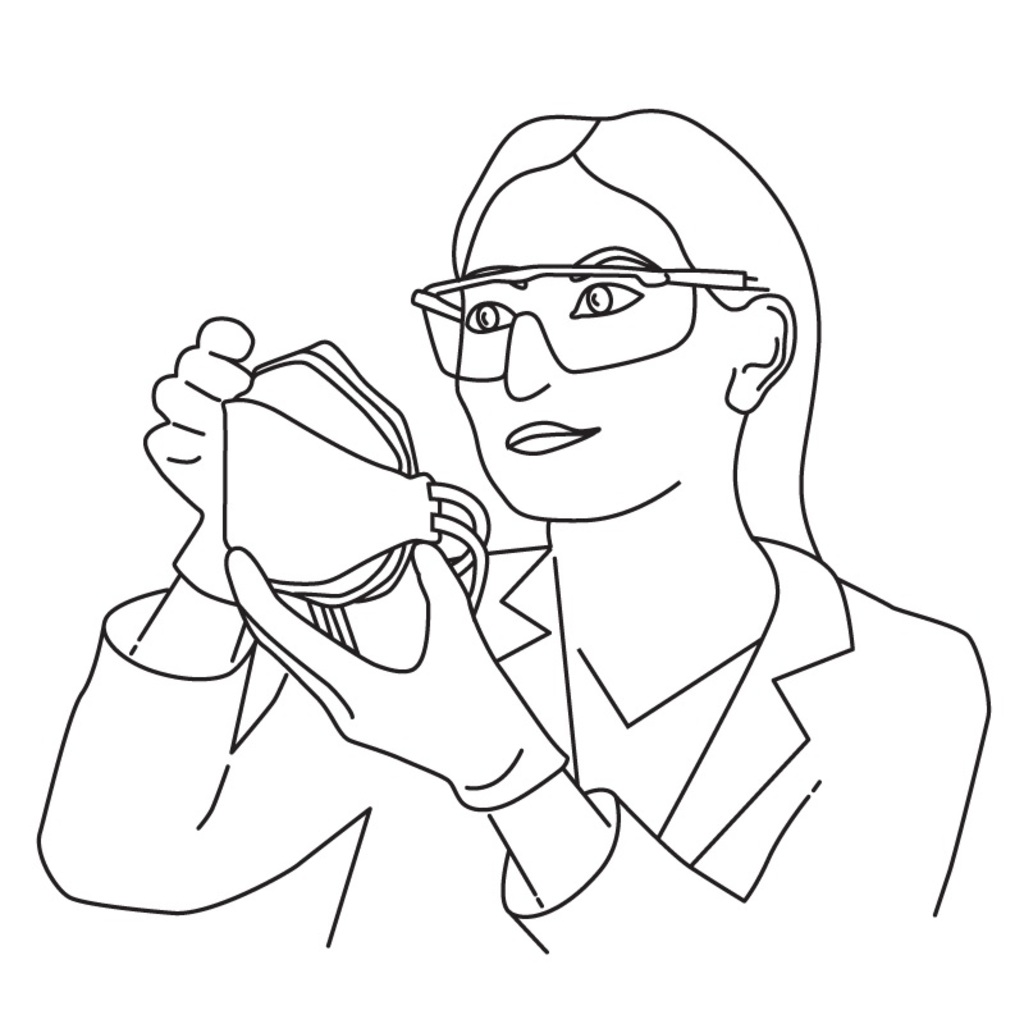
Kelly Rose
Editor

Kelly Rose
Editor
While positive steps have been taken, there is still much more that can be done to reduce incidences of occupational lung disease, according to George Elliott.
Educational and information programmes focusing on the risks of workplace respiratory hazards have increased in recent years BSIF’s Clean Air Take Care and the British Occupational Hygiene Society’s (BOHS) ‘Breathe Freely’ campaign1 and the Institution of Occupational Safety and Health’s (IOSH) ‘No Time to Lose’ initiative2), but there is still much more that can be done.
This is emphasised by statistics from the Health and Safety Executive (HSE) which estimates that there are some 12,000 deaths each year in Great Britain from lung diseases linked to exposure to hazardous substances at work3. In addition, a further 18,000 new cases of lung or breathing problems caused (or made worse by) airborne hazards in work environments will be reported over the same time period3.
When considering these numbers, one must account for the fact that symptoms of occupational lung diseases can take several decades to present themselves, but even so, they show no signs of decreasing. The HSE says that the rate of self-reported, work-related lung or breathing problems has remained mostly consistent over the past ten years, with an estimated 130 cases per 100,000 workers3.
Reducing these figures will require significant efforts on the part of employers and employees themselves.
Seeing the hazard
Harmful airborne hazards are numerous, and many are well known. Crystalline silica, for example, is a natural substance found in a variety of building materials and becomes airborne as a result of cutting, grinding and drilling silica containing materials. The inhalation of Respirable Crystalline Silica (RCS) can cause a lung disease known as Silicosis, which is characterised by inflammation and scarring of the lungs.
Our understanding of hazards such as RCS is evolving constantly, and new research often reveals that standards and workplace exposure limits (WELs) previously deemed acceptable are, in fact, not conducive to good health. In February 2019, for instance, the HSE issued a safety bulletin about the change in enforcement expectations for the control of welding fume, determining all weld fumes to be carcinogenic4. This decision has had a significant impact on a wide variety of industries and, from my experience, has driven improved knowledge of workplace respiratory hazards within welding related industries – a welcome benefit.
Companies have a legal duty to limit the exposure of their employees to these hazards. Under the Health and Safety at Work etc. Act 1974 and the Management of Health and Safety at Work Regulations 1999, they are required to provide and maintain a safe working environment, so far as is reasonably practicable. Typically, a ‘Hierarchy of Controls’ is considered when limiting exposure: Elimination, Substitution, Engineering, Administration and finally Personal Protective Equipment (PPE).
PPE (including Respiratory Protective Equipment, or RPE) should always be considered the last line of defence once other control measures are considered and/or implemented. However, according to the HSE, an in-depth investigation of a small sample of companies “showed only around half were effective in protecting the wearer through their use of RPE as a control”, owing to a lack of understanding, knowledge and awareness5. So, what are the common steps in providing effective respiratory protection?
Assessing the risks
In the first instance, companies must carry out risk assessments, firstly to identify any airborne hazards. Steps should then be taken to limit and reduce individuals’ exposure to airborne hazards, which is where consideration of the Hierarchy of Controls comes in. However, respiratory hazards will sometimes remain even after such measures have been taken. In these cases, employees may still require adequate RPE, which can reduce exposure to the hazards faced, to the level required to protect the wearer’s health.
Adequate RPE
To find adequate RPE, employers should first narrow down their options to include only those that can protect against the hazards identified in the initial risk assessment. Next, employers should reduce their options further, to include only RPE that is also capable of protecting against the concentration of the hazard present in their workplace. Typically, RPE manufacturers can assist with this process by providing an overview of their products’ capabilities.
Suitable RPE and wearer diversity
RPE should not only be adequate, it must also be suitable for its intended use. Comfort is one of the main factors affecting rates of compliance. It is therefore important that during selection, individuals look for RPE incorporating features that maximise wearer comfort such as soft materials in contact with the skin and easy opening exhalation valves that can efficiently vent hot and humid air exhaled by wearers.
Because all people are different and comfort is subjective, it is important that – once the RPE options have been narrowed down to those that can provide adequate protection – workers are involved in the final RPE selection process. Experience has indicated that if workers become involved in the selection decision and trial product options, they are more likely to comply with wearing RPE when it is required.
Common types of RPE for consideration may include disposable respirators, reusable respirators, and powered/supplied air systems. These options provide a variety of different features to suit the needs of the user and their working environment. In addition, manufacturers often design a range of products with the same levels of protection in a variety of shapes and sizes to accommodate a broad spectrum of facial features.
A hairy situation
Trends must also be considered. For instance, facial hair remains popular for many men - a fashion that doesn’t look like dissipating any time soon. According to research by YouGov in 2017, 42 per cent of men now have some form of facial hair, of which 44 per cent sport a full beard6. But its presence can have significant detrimental effects on the performance of RPE. In 2015, the HSE carried out tests7 on 15 volunteers with varying amounts of facial hair using a range of facepieces with different types of face seals.
The results of these tests indicated that, with the selected tight-fitting filtering facepieces and half masks, the protection given to the wearer was reduced if they had stubble. The effect of stubble may begin within just eight hours of the subject shaving and increases as facial hair grows7.
It is important that workers are taught how to use and correctly fit their masks, and on the importance of being clean-shaven if wearing a tight-fitting respirator. This is where face-fit testing by a competent person can play a vital role.
Competent fit testers not only have a valuable role in confirming fit of RPE, they can also provide one-to-one training for wearers to reinforce the message of the importance of correct fit (including donning instructions), compatibility with other PPE (other head worn PPE should be worn during the fit test) and talk about the negative effects of facial hair on fit. To find a qualified and competent face fit tester visit www.fit2fit.org/findatester
There are, however, some RPE options for those who do sport various degrees of facial hair. Typically, these are known as loose-fitting headtops which are afforded either filtered powered air through a battery powered turbo or a regulator providing breathable quality air from a secondary air source. These loose-fitting devices allow for the whole head and face to be covered, with the seal made either under the chin, around the neck or indeed via an inner shroud. These loose-fitting devices do not need to be face-fit tested either.
Changing mindsets and the next generation
It is also the responsibility of workers (with the assistance of their employers) to take the respiratory hazards they face seriously. In many cases, the consequences of not wearing the correct PPE are obvious. It’s easy to imagine the dangers of being hit on the head by a falling object, so the wearing of a hard hat is simply common sense. Harmful airborne hazards, on the other hand, can be colourless, odourless and tasteless, and can therefore be easier to dismiss.
Since many occupational lung diseases have long latencies, it is very easy for workers to become blasé about the threats, adopting the mindset that 'it won't happen to me’. This mindset needs to change – resources from BOHS, IOSH and other industry bodies including the Construction Dust Partnership can provide helpful ideas for communicating the deadly respiratory risks employees encounter.
While the statistics mentioned at the start of this article have improved from the decades preceding, there is still much more that can be done. When we give workers the right education regarding the dangers of respiratory hazards and back this up with an ever- increasing choice and variety of adequate and suitable RPE, we can hope to see a steady downward trend in work-related ill health statistics.
References:
1 www.iosh.co.uk/VP/Home/Toolkit/IOSH-No-Time-to-Lose-Campaign.aspx
3 www.hse.gov.uk/statistics/causdis/respiratory-diseases.pdf
4 www.hse.gov.uk/safetybulletins/mild-steel-welding-fume.htm
5 www.hse.gov.uk/respiratory-protective-equipment/how-good-are-you.htm
6 https://yougov.co.uk/topics/politics/articles-reports/2017/03/10/beards-are-growing-british-public
7 www.hse.gov.uk/research/rrhtm/rr1052.htm
George Elliott is UK and Ireland application engineering manager for the Personal Safety Division at 3M. For more information, visit 3M.co.uk.



Accounts Payable Dept.
P O Box 201
3M Centre
Bracknell
RG12 8HT
UNITED KINGDOM
08705 360036